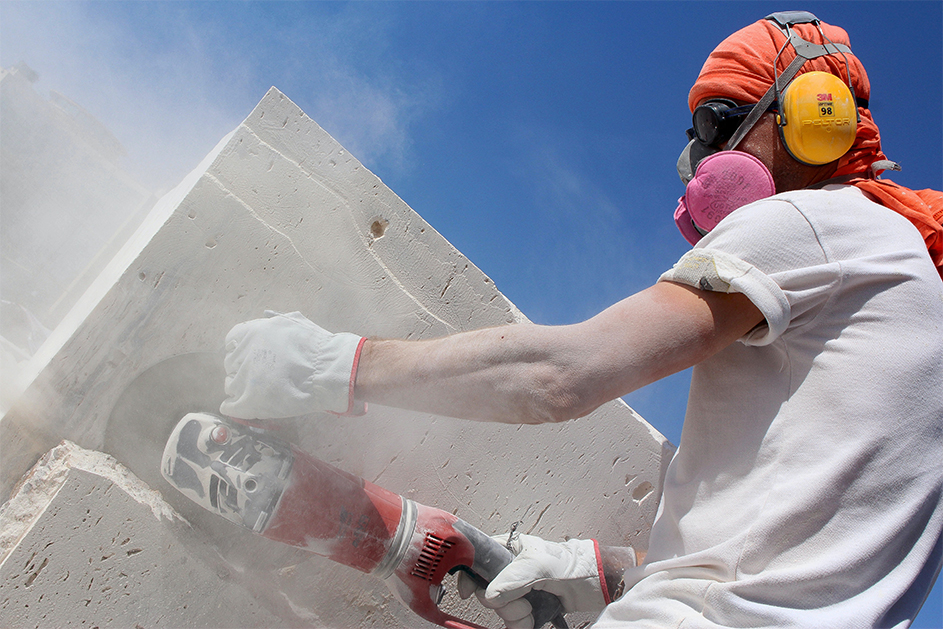An important notice has been issued in the AAI & MTA car dealer add-on insurance class action.
See the notice and find more information here to register.
I have an undeniably serious job as a lawyer who represents clients suffering from lung diseases caused by breathing in toxic dust at work. I use various strategies to cope with my work to re-energise myself so I can continue to represent this very deserving cohort of clients. These strategies include exercise, catching up with friends and watching ‘switch off TV’, including The Block. The Block is great entertainment and allows me (and many others) to unwind at the end of the day.
The show is a runaway success - it’s currently in its 18th season and has prompted many to undertake a home renovation. The contestants have the opportunity to make hundreds of thousands of dollars by renovating a house, selling it and taking home the difference between the reserve (set by the show) and the sale price. It’s genuinely exciting come auction day. Then there is the entertainment from the contestant-based drama such as last year’s ‘cheating scandal,’ whereby one contestant struggled to accept the difference between telling “the truth” vs “her truth”.
But I have to admit, I feel uncomfortable when ‘kitchen week' is announced. I should be excited because it’s one of the biggest weeks of the show with some impressive reveals. Unfortunately, it makes me think about my clients suffering from a lung condition called silicosis who have contracted the disease from their work with engineered stone.
What is engineered stone and how is it linked to occupational lung disease?
Engineered stone, (otherwise referred to as artificial or reconstituted stone), is a man-made composite of different materials held together by polymer resin. Engineered stone has become increasingly popular in kitchen renovations as a budget-friendly choice for kitchen benchtops. It is typically simpler and cheaper than traditional granite or marble to both source and fit, while being similarly durable and long-lasting.
While it arguably may look just as good as natural stone, the issue with engineered stone is that it contains a far higher content of crystalline silica than natural stone; over 90%, compared to granite with 30% and marble which has just 3%. This means workers cutting engineered stone have a much higher risk of contracting a serious lung disease.
Sadly, I am seeing a new wave of clients with silicosis, and other silica-related diseases, caused by working with engineered stone and breathing in toxic silica dust.

How does silica dust exposure lead to silicosis ?
Silicosis is an incurable and progressive lung disease caused by breathing in respirable crystalline silica dust. It causes scarring on the lungs which can result in severe breathlessness, chronic immobility, organ failure and ultimately death. Many affected workers do not know if and how rapidly their condition may deteriorate, or whether it will lead to other serious diseases, such as lung cancer or auto immune conditions in the future. Currently there is no proven treatment for silicosis other than a lung transplant.
Leading respiratory physician Dr Ryan Hoy, in conjunction with Professor Dan Chambers, outlined the severity of the current wave of silicosis in their article ‘Silica-related diseases in the modern world’.
In 1997, the International Agency for Research on Cancer classified respirable crystalline silica as a ‘human carcinogen’ with silicosis remaining a major health issue internationally:
“There have been recent outbreaks of severe, progressive forms of silicosis in countries including Israel, Spain and Australia due to the introduction of high silica-containing artificial stone…these outbreaks have noted a younger age at diagnosis and more rapid disease development than chronic silicosis, a high rate of disease progression, and resultant death or requirement for lung transplantation.”
How can home renovators avoid contributing to the silicosis problem?
On The Block this year, there has been considerable effort made to build with sustainable products for the environment, but we should also be considering the health of the workforce that supplies these products.
Silicosis is a terrible dust disease and one that is avoidable. It’s time for contestants, viewers and consumers to consider the health of others and ask questions when renovating or designing a kitchen, laundry or bathroom space.
If you are taking inspiration from The Block and doing some home renovations, there are things that you can do to ensure you’re not contributing to the silicosis problem:
- If you are considering engineered stone for your home, research the suppliers: know where their products are fabricated and confirm whether they have adequate safety measures in place for their workers.
- If you’re working with contractors, take the time to ask questions about the products they propose to use and whether they’re made ethically and safely.
- Consider whether you can use natural stone or other alternatives to engineered stone wherever possible.
- Educate yourself on what’s in the building materials you choose for your home and whether they may be putting workers at risk, and whether there is a safer alternative.
The Block should also be bringing awareness to the significant safety risks that come from the dust associated with cutting stone benchtop products and highlighting the importance of safety and regulation for workers using the products.
New legislation bans dry cutting of engineered stone
In Victoria, recent changes to the legislation now require all businesses fabricating engineered stone to be licensed and put in place strict rules to minimise airborne dust, such as the enforcement of wet cutting methods. This is a significant step forward to protect workers and one that should be widely acknowledged and shared in an effort to better protect workers.
I’ll be cautiously watching The Block to see if they mention the health risks associated with the fabrication of engineered stone and the importance of considering alternative products. With such a wide-reaching audience, The Block has the platform to educate viewers who are inspired to renovate make informed decisions about their product purchases.
We're here to help
Contact us today
Register your dust exposure
Document exposure now in case you develop an asbestos, silica or other dust related disease later. This can help you with a future claim.
We can help with disease exposure claims
Our experienced lawyers have a long history of fighting for the rights of people suffering from asbestos, silica and other dust related illnesses. If you've been diagnosed with a dust disease, you may have a claim for compensation.
It doesn't cost you anything to know where you stand
Office locations
We’re here to help. Get in touch with your local office.
Select your state below
- VIC
- QLD
- NSW
- ACT
- WA
- SA
- TAS
- NT
We have lawyers who specialise in a range of legal claims who travel to Australian Capital Territory. If you need a lawyer in Canberra or elsewhere in Australian Capital Territory, please call us on 1800 675 346.
We have lawyers who specialise in a range of legal claims who travel to Tasmania. If you need a lawyer in Hobart, Launceston or elsewhere in Tasmania, please call us on 1800 675 346.
/MBL_HollyPinnis_2022-01-12_300x300px.jpg)
/MBL_MiaPantechis_2022-05-01_900x384px.jpg)

/tsanz-thumb.png)
/tunnelling-blog-tumb.jpg)
/wendy-thumb.png)